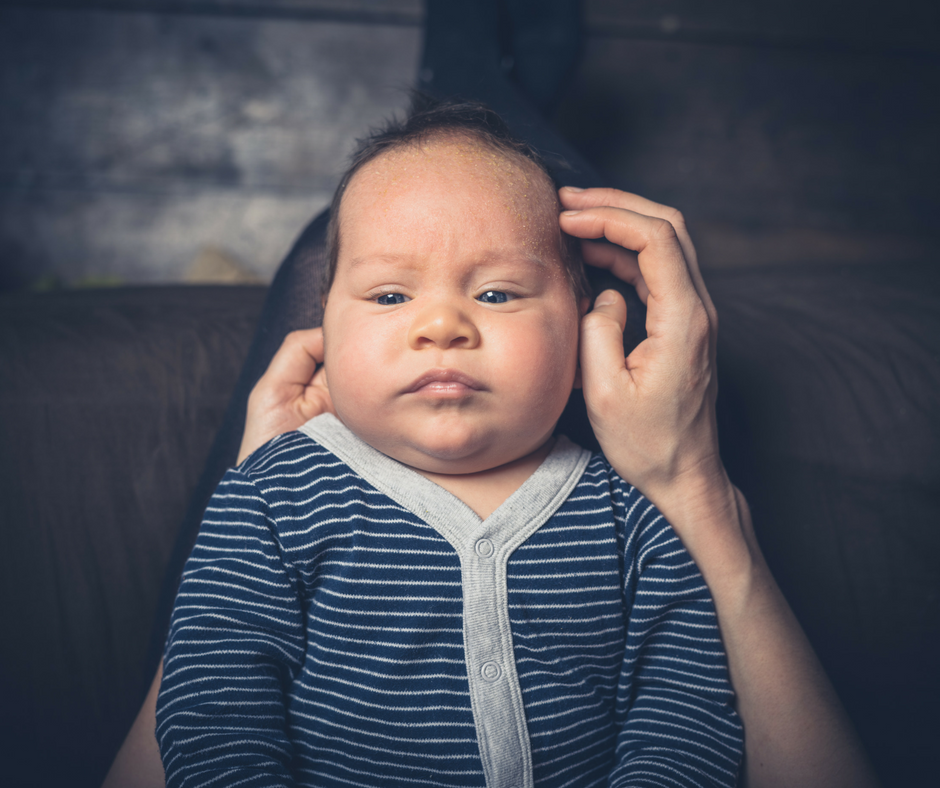As naturopathic doctors working with kids, we get a lot of questions from parents about a new or ongoing rash they’ve seen cropping up on their baby or child’s skin. Rashes or other skin issue are a good reason to check in: the skin is the largest organ of the body, tends to be extra sensitive in little ones, and conveys a lot of information about his or her overall health status.
Below The Surface
You might be surprised to learn that most skin conditions aren’t “just” skin conditions. The skin happens to be one way that symptoms express themselves that we can easily see and observe. It’s also why we include a skin health exam with your baby or toddler’s well child visits, since healthy, clear, smooth skin is a marker of optimal health.
Red & Rashy
Redness is a sign of increased blood flow to areas of the skin, which can be due to irritation or infection. Eczema is an example of a condition that often involves pink to red spots or patches on the skin, including the arms, legs, trunk or face. Yeast or candida also causes redness, usually brighter red patches on moist areas such as the diaper area, or skin folds such as the neck and leg creases. Red rashes also occur with many different viral infections and should be checked out by your child’s health practitioner for treatment options.
Baby Bumps
Sometimes infants cheeks or arms will break out in tiny red or pink bumps. This is often “baby acne”, a short term response to flushes of hormones from mom’s body. Once your child’s practitioner has ruled out other causes such as a viral infection, baby acne doesn’t require specific treatment.
The next most common spotty or bumpy rash we see is hand, foot and mouth disease. This is a common viral infection that results in red bumps or spots on kids’ hands, feet and, you guessed it, inside their mouth. They’ll often have a fever along with this rash and the infection is very contagious. It usually resolves within 3 days. Handwashing and not sharing cups and utensils is especially important to prevent spreading this virus around the household. Everyone should have his or her own towels, too. The hardest part about this condition is making sure kids have enough to drink. The sores in their mouths can make it uncomfortable for them to take in food as usual and they need fluids to prevent dehydration with a fever. Offer jello, soup, dilute juices and homemade popsicles which help soothe as well as hydrate.
A larger, up to half-centimetre breakout of bumps could be a viral infection called “molluscum” or Molluscum contagiosum. These little bumps look shiny or pearly and may be itchy. Like its name conveys, it is contagious and should be kept covered with soft breathable clothing while being treated. Oil extract of St. John’s wort flowers contain anti-viral properties that have been successful to clear up molluscum in clinical cases. Once again, be sure to have your child’s skin condition examined by his or her practitioner and ask for the safest, gentlest effective treatments.
Dry & Flaky
Cradle cap is a flaky scalp condition within the baby’s hair line or sometimes even around the ears. Waxy, light brown flakes can be gently removed with a comb as they naturally come loose, but should not be pulled from the scalp if they’re stuck. Persistent severe cradle cap may be a sign of a certain kind of yeast, or even a low level of omega 3 fats in baby’s diet. Breastfeeding moms can increase their intake of omegas to enrich the breastmilk naturally with these essential fats for a healthy brain and skin. Sources of omega 3’s include fish oil supplements, cold water fish, cold pressed flax seed oil, hemp seeds and oil, and walnuts. Children older than 6 months can take their own purified cod liver oil supplement, which handily comes flavoured in palatable, easy-to-give liquids and will have doses labelled as appropriate for children of different age ranges. Ask your naturopath for details if you’d like guidance on any nutritional supplements she or he may need.
Dry, flaky skin in kids could also be a sign of a need for more omega 3s, or perhaps a change in something they’re being exposed to topically, or even over bathing. Go soap-free and scent-free for babies and kids. Look for the purest products to apply to baby’s skin after a bath. Ingredients such as perfume/fragrance/parfum, phthalates, anything ending in “-paraben” and petroleum byproducts should be avoided. Try coconut oil, shea butter, or olive oil to soothe and smooth baby’s dry skin. We also love castor oil for those ultra dry or flaky spots, including eczema. When introducing a new topical skin care regime, always test with a few drops applied to baby’s arm or tummy for a couple of days just in case your baby has a particular sensitivity.
What is Eczema?
Eczema is a very common condition in kids. The patches or bumps are actually created by the child’s immune system responding to a trigger, such as a food intolerance or imbalanced gut flora. Eczema is linked with the other “atopic” conditions, allergies and asthma or wheezing. In fact, research shows that certain probiotic strains given to babies from birth through 2 years has significant impact on their risk of eczema, allergies and asthma. Eczema that’s dry or itchy can also become infected with bacteria, such as staph. That’s where you’ll see a honey-coloured oozing discharge or crust on the affected skin and you’ll want to have that assessed and treated right away.
If you think your child has eczema, see your paediatric naturopathic doctor for a complete assessment and treatment options.
Yeasty Beasties
Yeast, or candida, is a common cause of red rashes in babies and kids. Yeast are considered normal flora on the skin, however, rashes, odors and discharges are not normal and should be treated. Diaper rash that’s red and quite demarcated is typical of yeast. Some parents notice a “cheese” or bread-like odor on their little ones, which often signifies yeast overgrowth on the skin. Sometimes babies stools will also take on a yeast like odor, indicating there’s an abundance of yeast hanging out in the digestive tract.
In addition to rashes, yeast also shows up as the condition “thrush”, appearing as white plaques on the inside of babies’ mouths. When it transfers between mom and baby during breastfeeding it can cause irritation and pain for mom and interfere with your breastfeeding goals, which we’d of course love to protect! Infant-specific probiotics are an effective first line therapy to treat thrush and diaper rash. Medical treatments include antifungal medications.
Yeast take advantage of easy-growing conditions: less acidic skin pH, warm, moist skin areas, and availability of nutrients such as sugars. The root cause of yeast overgrowth on a child’s skin can go all the way back to exposure to yeast on caregiver’s skin or through the birth process. It also reflects there could be yeast overgrowth in the child’s digestive tract. We take an evidence based naturopathic approach to yeast, including treatment with oral probiotics and topical soothing baths with medicinal ingredients diluted in. A cup of apple cider vinegar in the child’s bath can be a soothing first aid type treatment as long as the skin isn’t broken and of course, you’ll need to keep that bathwater from splashing in the child’s eyes.
Get a Good Gut Feeling
Many skin issues actually begin in the gut. The majority of the child’s immune development is happening in the gut, so it’s important to start with a great foundation that allows beneficial bacteria, such as Bifidobacterium and Lactobacillus species, to colonize the gut lining and outcompete potentially disruptive ones such as candida, parasites or harmful infection-causing bacteria. With the right balance of good bacteria you’ll also find your child has less colic, less discomfort, less risk of spitting up and less risk of infant GERD (gastroesophogeal reflux disorder).
Research also shows that dairy products are the leading cause of infant colic and one of the most common causes of infant eczema. This includes dairy based infant formula as well as milk products that you’re consuming in your own diet. Removing dairy to see if symptoms improve and waiting to reintroduce it until later in the child’s life (this could be months or a couple years later depending on his or her situation) can bring relief if dairy’s the culprit. When your child is 2 or older, you can also request a food intolerance test through your child’s naturopathic doctor. This test screens for antibodies to a panel of 120 different foods to allow you to understand how the child’s immune system may be inappropriately or exaggeratedly responding to certain foods and creating an inflammatory response that shows up as skin rashes or eczema.
More Help
Most skin conditions in kids respond well to naturopathic therapies. You and your child are always welcome to have a meet-and-greet consultation with one of our naturopathic doctors to discuss what treatment might look like and whether it’s a good fit to work together. Book online or contact us with any questions about how we can help.

